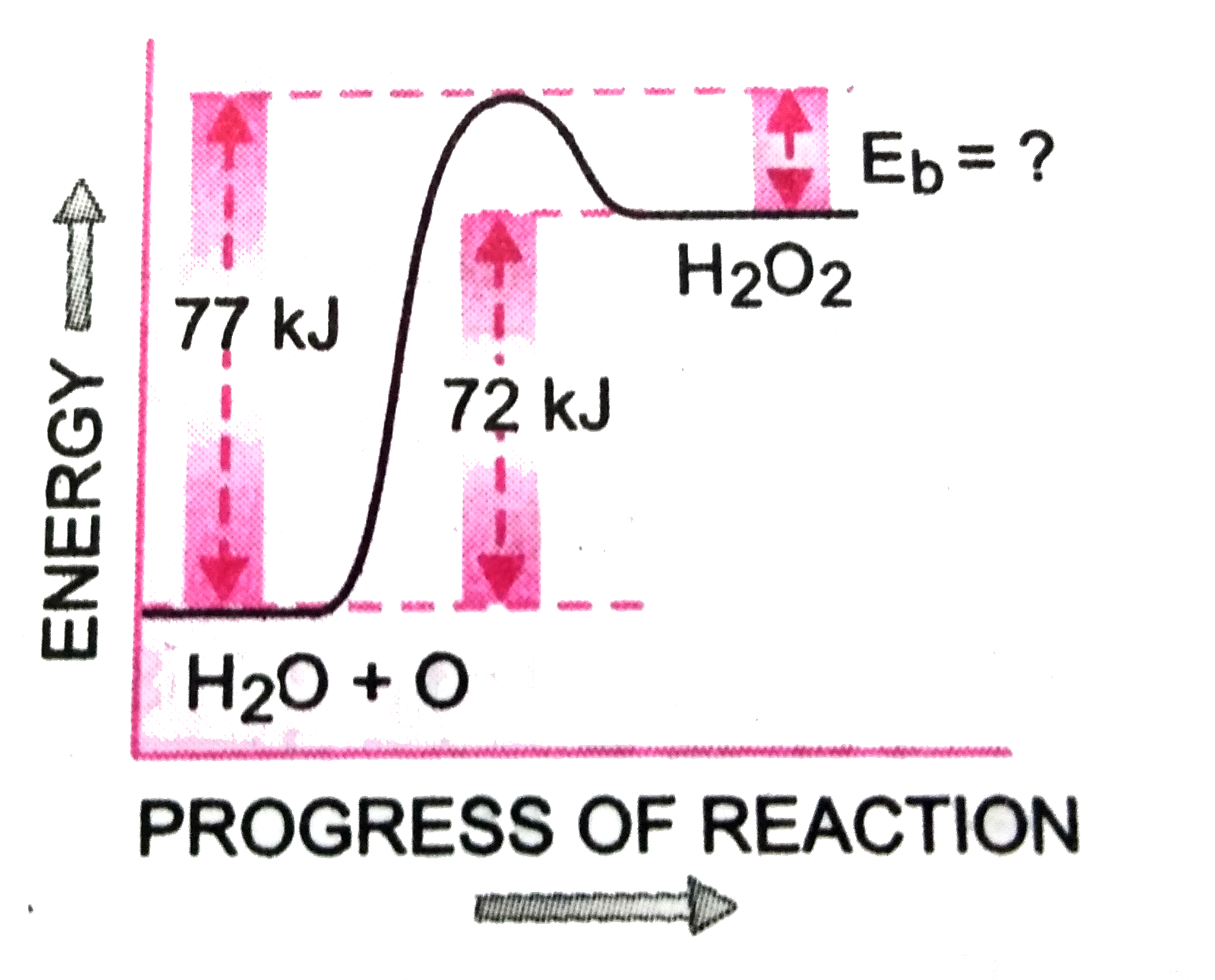The formation of H2O2 in the upper atmosphere follows the mechanism
H2O+O→2OH→H2O2
ΔH=72 kJ mol−1,Ea=77 kJ mol−1
Ea for the backward process is
5 kJ mol−1
−5 kJ mol−1
149 kJ mol−1
−149 kJ mol−1
The correct Answer is:A
Activation energy for bhackward reaction =77−72=5 kJ mol−1.

Topper's Solved these Questions
- BOOK - PRADEEPCHAPTER - CHEMICAL KINETICSEXERCISE - COMPETITION FOCUS (JEE(Main and Advanced)/Medical Entrance) (II. Multiple Choice Questions)1videos
CHEMICAL KINETICS
- BOOK - PRADEEPCHAPTER - CHEMICAL KINETICSEXERCISE - COMPETITION FOCUS (JEE(Main and Advanced)/Medical Entrance) (I. Multiple Choice Questions) With one or more than one correct answers7videos
CHEMICAL KINETICS
- BOOK - PRADEEPCHAPTER - CHEMICAL KINETICSEXERCISE - VALUE BASED QUESTIONS (WITH ANSWERS)2videos
CHEMICAL KINETICS
- BOOK - PRADEEPCHAPTER - BIOMOLECULES EXERCISE - IMPORTANT QUESTIONS (FOR BOARD EXAMINATION)25videos
BIOMOLECULES
- BOOK - PRADEEPCHAPTER - CHEMISTRY IN EVERYDAY LIFE EXERCISE - IMPORTANT QUESTION FOR BOARD EXAMINATION30videos
CHEMISTRY IN EVERYDAY LIFE
Similar Questions
There is formation of H2O2 in the upper atomsphere.
H2O+O→2OH→H2O2
ΔH=72kJmol−1,Ea=77kJmol−1
What will be the Ea for bimolecular recombination of two OH radicals to form H2O and O in kJ.View SolutionThere is formation of H2O2 in the upper atmosphere.
H2O+O→2OH→H2O2
ΔH=72Kjmol−1, Ea=77Kjmol−1
What will be the Ea for bimolecular recombination of two OH radicals to form H2O and O in Kj.View Solution
Knowledge Check
- Question 1 - Select One
In gaseous reaction, important for the understanding of the upper atmosphere H2O and O react bimolecularly to from two OH readicals. ΔH for this reaction is 72 kJ at 500 K and Ea is 77 kJ mol−1, then Ea for the bimolecular recombination of two OH readicals to form H2O and O is :
A3kJmol−1B4kJmol−1C5kJmol−1D7kJmol−1 - Question 2 - Select One
In gaseous reactions important for the understanding of the upper atomoshphere H2OandO react bimolecularly to form two OH radicals .ΔH for this reaction is 72kJmol−1 at 500 K and Ea is 77 kJ mol−1 then Ea for the bimolecular recombination of two OH radicals to form H2O→O is:
A3kJmol−1B4kJmol−1C5kJmol−1D7kJmol−1 - Question 3 - Select One
The formation of H2O2 in the upper atmosphere follows the mechanism
H2O+O→2OH→H2O2
ΔH=72 kJ mol−1,Ea=77 kJ mol−1
Ea for the backward process isA5 kJ mol−1B−5 kJ mol−1C149 kJ mol−1D−149 kJ mol−1
Calculate the enthalpy of formation of sucrose (C11H22O11) from the following data:
(i) C12H22O11+12O2→12CO2+11H2O,ΔH=−5200.7kJmol−1
(ii) C+O2→CO2,ΔH=−394.5kJmol−1
(iii) H2+12O2→H2O,ΔH=H2O,ΔH=−285.8kJmol−1.View SolutionCalculate the enthalpy of formation of sucrose (C12H22O11) from the following data :
(i) C12H22O11+12O2→12CO2+11H2O,ΔH=−5200.7kJmol−1
(ii) C+O2→CO2,ΔH=−395.5kJmol−1 (iii) H2+12O2→h2O,ΔH=−285.8kJmol−1View SolutionThe average O-H bond energy in H2O with the help of following data.
(1) H2O(l)→H2O(g),ΔH=+40.6kJmol−1
(2) 2H(g)→H2(g),ΔH=−435.kJmol−1
(3) O2(g)→2O(g),ΔH=+489.6kJmol−1
(4) 2H2(g)+O2(g)→2H2O(l),ΔH=−571.6kJmol−1View SolutionThe average O−H Bond energy in H2O with the help of following data :
(P) H2O(l)→H2O(g), ΔH=+40.6kJmol−1
(Q) 2H(g)→H2(g), ΔH=−435.0kJmol−1
(R ) O2(g)→2O(g), ΔH=+489.6kJmol−1
(S) 2H2(g)+O2(g)→2H2O(l), ΔH=−571.6kJmol−1View SolutionThe formation of the oxide ion O2−(g) requires first an exothermic and then an endothermic step as shown below.
O(g)+e−=O−(g)ΔH∘=−142kJmol−1
O−(g)+e−=O2−(g)ΔH∘=844kJmol−1 This is because of :View Solution

